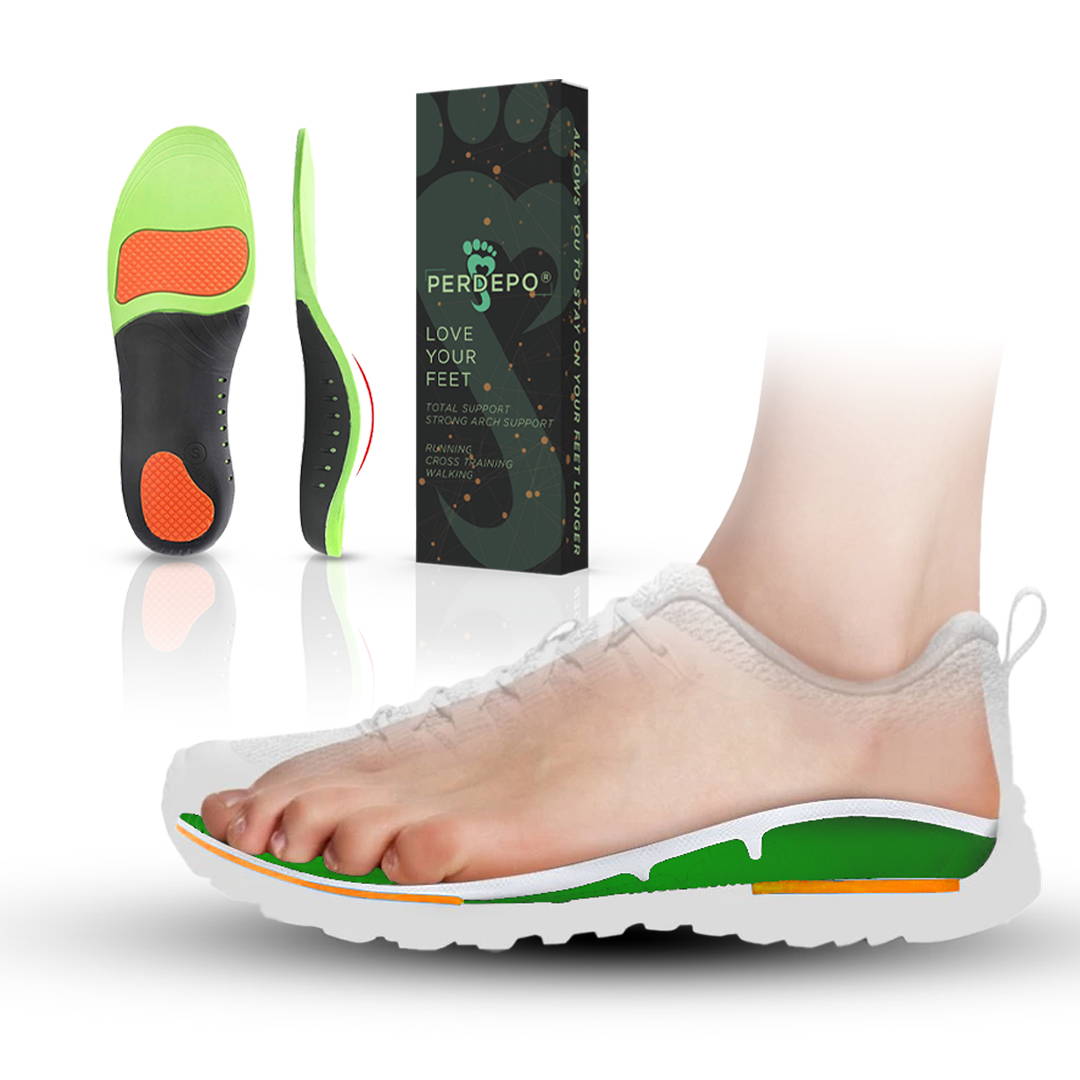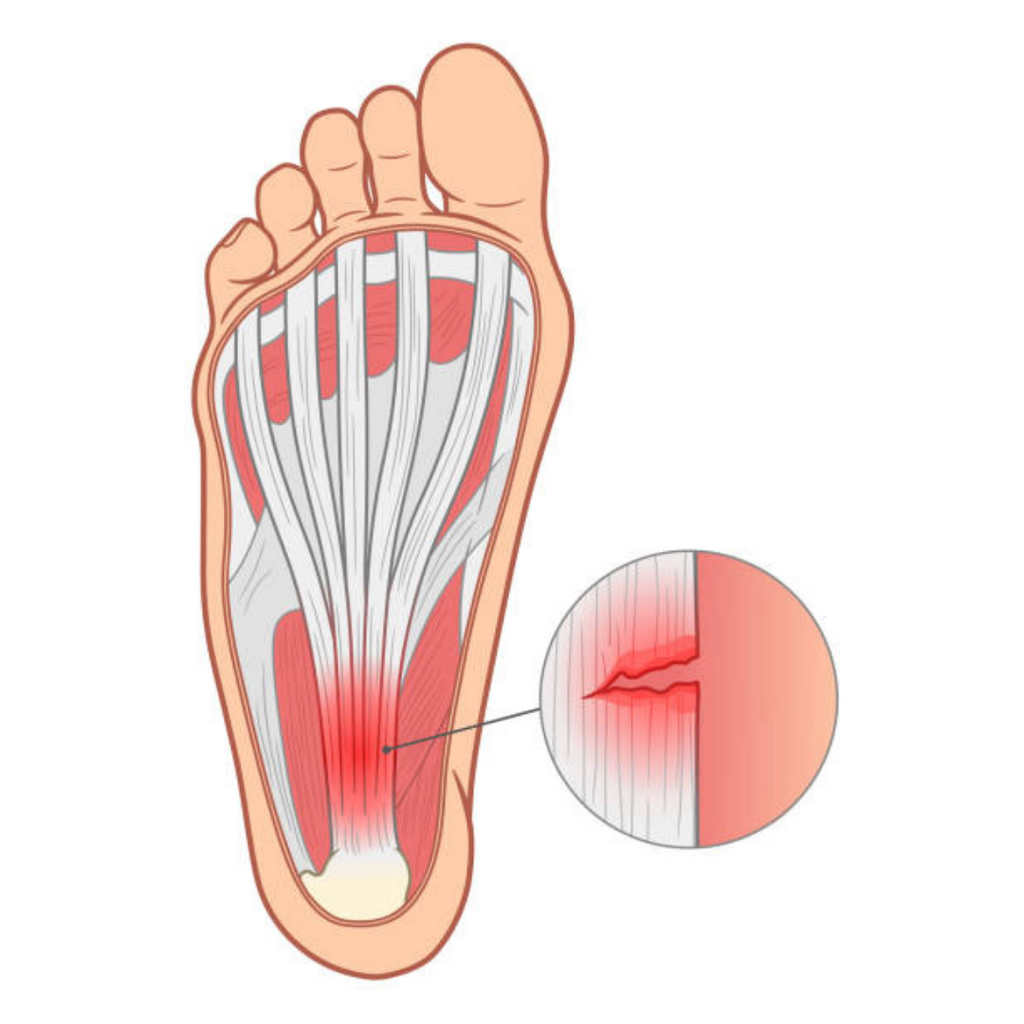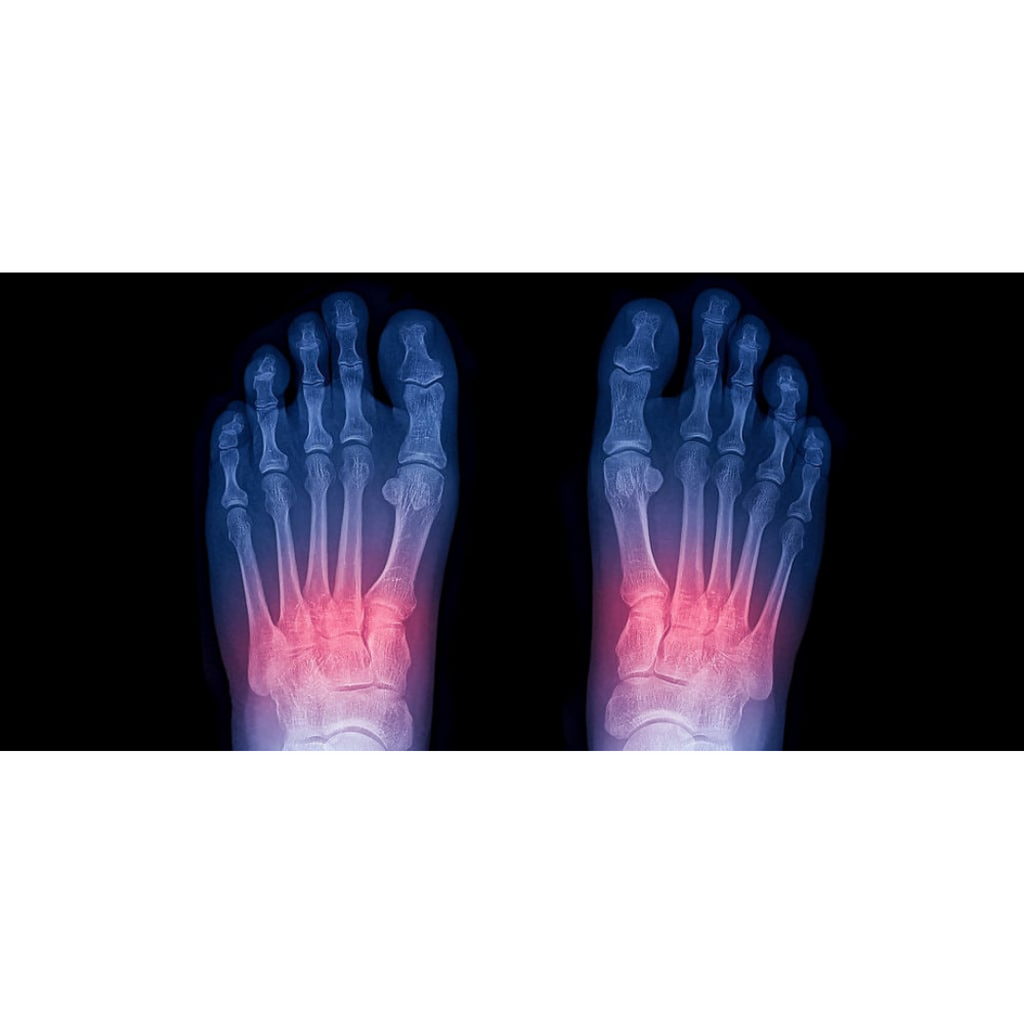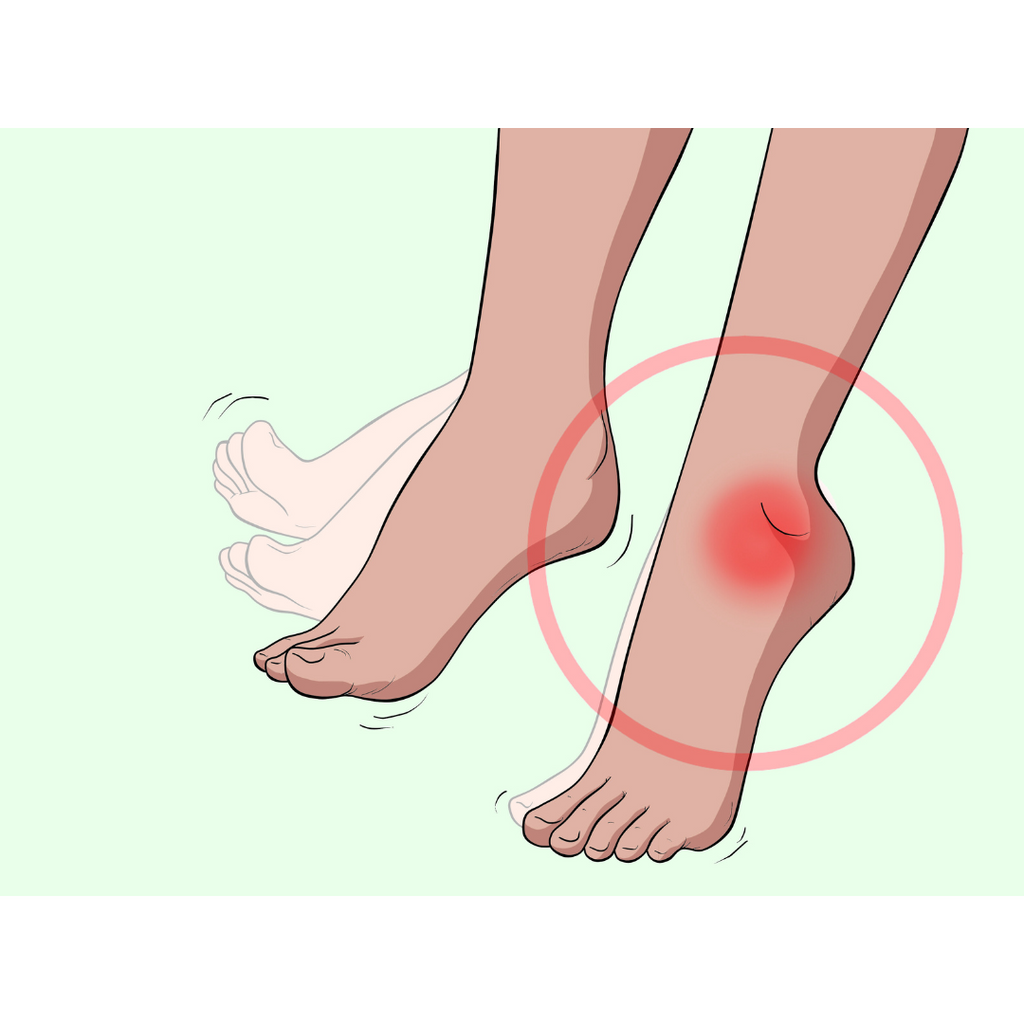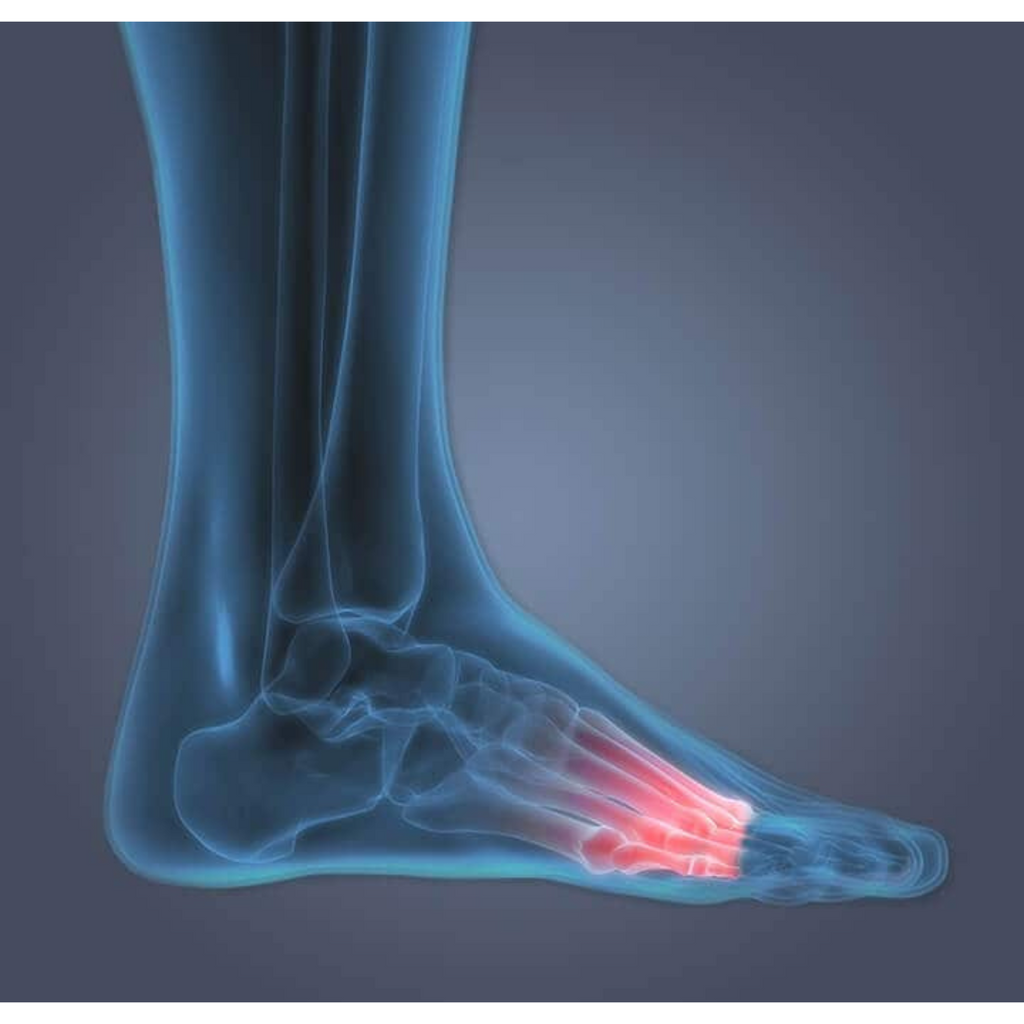Anatomy of Your Foot
Your feet are constantly moving. It's not surprising that they're a common source of annoyance. With 26 bones, 33 joints, 19 muscles, and 107 ligaments, there's a lot going on down there! At some point in our lives, at least 80% of us will experience a foot problem.
Your feet are divided into three sections:
- There are five toes (phalanges) and five longer bones (metatarsals). The metatarsals are numbered 1–5. The first metatarsal is in your big toe, and the fifth metatarsal is in your little toe.
- The arch of your feet is formed by the midfoot. This section contains three cuneiform bones, as well as the cuboid and navicular bones.
- The hindfoot, which includes the heel and ankle. The talus bone, which supports the leg bones and forms the ankle, is included in this section. The calcaneus bone, also known as the heel bone, is the largest bone in the foot.
The tendons, muscles and ligaments that run along the surfaces of your feet enable you to perform complex movements. We would be unable to balance or move freely without them. The Achilles tendon is vital because it connects the heel to the calf muscle, allowing for jumping, tiptoeing, and running., and ligaments that run along the surfaces of your feet enable you to perform complex movements. We would be unable to balance or move freely without them. The Achilles tendon is vital because it connects the heel to the calf muscle, allowing for jumping, tiptoeing, and running.
Why You Have Pain in the Ball of Your Foot
The fat pad in our feet thins out as we get older. This makes us more prone to pain in the ball of our foot. At some point in our lives, at least 80% of us will experience a problem with our feet. Many factors influence the condition of our feet, including our occupation, activity level, and, most commonly, our shoes. These variables can result in a variety of conditions that cause pain or soreness in the ball of your foot.
Common causes of ball-of-foot pain include:
- Intense physical activity
- Having a high arch or a second toe longer than the big toe
- Stress fractures
- Wearing high heels or shoes that are too small
- Hammer toe and bunions
- Being overweight
- Metatarsal joint pain or arthritis
How To Help Ball of Foot Pain When Walking
To alleviate your pain, the first thing you should do is make sure you're wearing supportive footwear that fits properly. This alone can help to alleviate any pain you are feeling. If you've done that, shoe inserts that support your arch or metatarsal can also help.
It may also aid in the reduction of any strenuous activity you are involved in. The pain in your foot will be relieved by removing the weight from your feet. If swelling is present, ice or heat therapy may be beneficial.
Top 4 Conditions Which Cause Pain in the Ball of Your Foot
1- Stone Bruise... Wait, what even is a stone bruise?
Metatarsalgia is another name for stone bruises. The medical term for 'ball of foot pain' is metatarsalgia. Metatarsalgia pain is typically felt under the 2nd, 3rd, and 4th metatarsal heads, or at the 1st metatarsal head, which is located near the big toe.
Between the metatarsal bones is a small nerve. When the heads of one metatarsal press against the heads of another, the nerve becomes trapped between them, causing inflammation.
This condition is mainly caused by ill-fitting footwear, such as women's dress shoes or other constricting shoes. If your footwear has a narrow toe area, the ball-of-foot area is squeezed into a small amount of space. Metatarsalgia can also be caused by putting too much pressure on the ball of the foot.
YOU MIGHT HAVE METATARSALGIA IF:
- The pain is primarily felt in the ball of the foot.
- Numbness in the area where the toes meet the foot
- Pain can be dull, aching, or sharp.
2- Morton’s Neuroma
Morton's neuroma is a condition in which the tissue surrounding the nerve leading to the toes thickens or swells, resulting in severe pain in the ball of the foot that is frequently described as a burning sensation. This condition usually occurs near the middle of your foot, between your third and fourth toes. The thickening of tissues around the nerves causes it.
Morton's Neuroma, like metatarsalgia, is thought to be caused by wearing high-heeled or tight shoes. Bunions, hammer toes, and flat feet are also thought to be related to Morton's neuroma.
Morton's neuroma is typically treated by switching to better shoes and using shoe inserts such as arch supports or foot pads to relieve ball of foot pain.
YOU MIGHT HAVE MORTON'S NEUROMA IF:
- You have the impression that you are standing on a pebble.
- You are experiencing a sharp, burning pain in the ball of your foot.
- You have tingling or numbness in your toes.
3- Sesamoiditis
The sesamoiditis bones act as pulleys, improving the tendons' ability to lift the big toe and the ball of the foot's ability to withstand weight. These bones are pea-sized and connect to your tendons rather than other bones.
These sesamoid bones can fracture or the tendons surrounding them can become inflamed. Sesamoiditis is an inflammation of the tendons surrounding the sesamoid bones. It is a type of tendonitis.
Activities that place a lot of pressure on the front of the foot are usually to blame. This, for example, is one of the more common ballet foot injuries. It is fairly common among catchers in baseball and softball. Running ball of foot pain can also be caused by this.
Sesamoiditis treatment includes discontinuing the problematic activity, resting and applying ice to the injured foot, and using orthotics for ball of foot pain. Wearing a foot pad under the toe and wearing low-heeled, comfortable shoes with a soft sole are two examples. A steroid injection or taping the big toe in a slight downward flexion may be beneficial in some cases. If this does not relieve the ball of the foot pain, you may need to wear a short foot fracture brace for a while.
Treatment for ball of foot pain caused by a fractured sesamoid includes wearing a stiff-soled shoe, a short leg fracture brace, or taping the joint to limit big toe movement. Inserting a shoe pad under the affected area can also help with pain, as can taking over-the-counter pain relievers.
YOU MIGHT HAVE SESAMOIDITIS IF:
- You are experiencing discomfort beneath your big toe.
- Your foot is bruised and swollen.
- You can't bend or straighten your big toe.
4- Freiberg’s Disease
Freiberg's Disease is a relatively uncommon condition affecting the second or third metatarsal. This disease is most commonly diagnosed in children aged 10 to 20, but it can affect people of any age.
This disease occurs when a portion of the metatarsal head loses structural integrity, resulting in joint surface collapse and pain in the second or third metatarsal.
In the early stages of this disease, patients can benefit from wearing a walking boot. A shoe insert may also be useful.
YOU MIGHT HAVE FREIBERG’S DISEASE IF:
- You limp because you are in pain.
- Pain and stiffness in the front of the foot
- Pain occurs after weight-bearing activities



